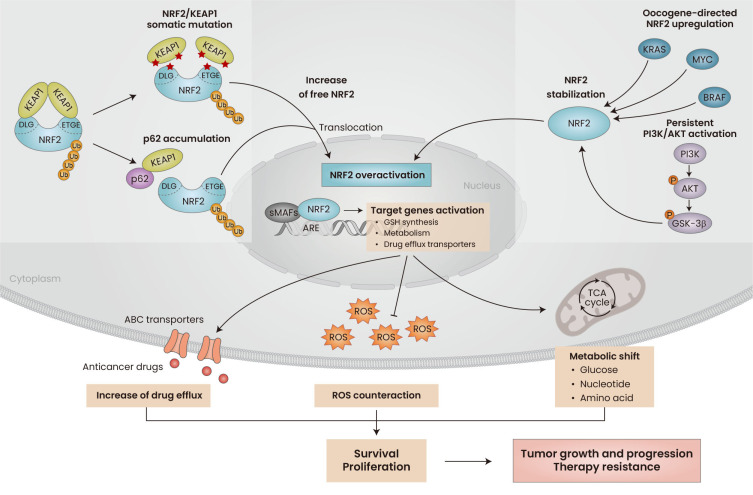Fig. 2. Role of NRF2 in cancer.
Aberrant NRF2 activation in cancer is often resulted from NRF2/KEAP1 somatic mutation and binding competition by p62 that results in liberation of NRF2 from KEAP1-mediated degradation system. As KEAP1-independent regulation, NRF2 stabilization is achieved by oncogenes-directed upregulation and persistent activation of PI3K/AKT signaling pathway. NRF2 overactivation increases its target genes expression to counteract ROS imbalance, enhance anticancer drug efflux, and re-direct metabolism to increase survival and proliferation, thus supports tumor growth, progression, and therapy resistance. ROS, reactive oxygen species; ABC, ATP-binding cassette; KEAP1, Kelch-like ECH-associated protein 1; DLG, DLG motif; ETGE, ETGE motif; sMAFs, small MAF proteins; ARE, antioxidant response element; GSH, glutathione; TCA, tricarboxylic acid; PI3K, phosphoinositide 3-kinases; GSK-3, glycogen synthase kinase-3.

